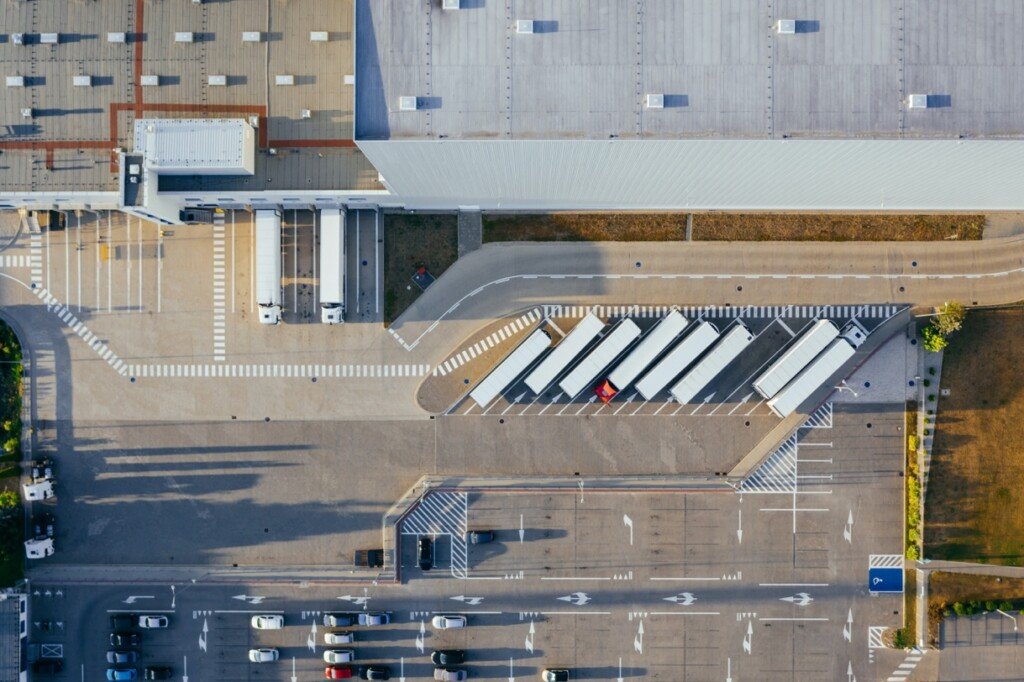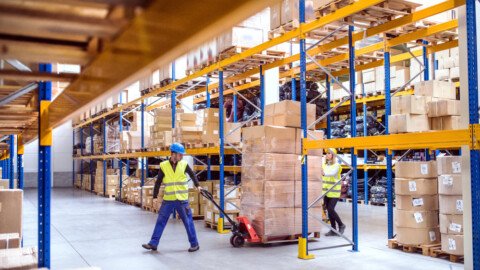Though there are similar warehousing clusters in Gurgaon, Bengaluru and Hyderabad, it is Bhiwandi, northeast of Mumbai that is becoming the flag-bearer of India’s booming logistics and warehousing business.
There are numerous factors that have contributed to the rise of Bhiwandi as a logistics and warehousing hub—from ancestral land parcels to government initiatives. Traditionally, known for its century-old power looms industry which still exists in the interiors of the city—people in the region have owned huge land parcels for generations, with farming being the primary as well as family occupation. With rapid urbanisation and rising land costs, most landowners gave up farming and leased out lands to build warehouses in a bid to achieve better ROI. The industrial status granted to logistics and warehousing sector also played a pivotal role as it made it easier to avail long term loans for building warehouses and logistics centres. The manufacturing units in Bhiwandi also cashed in on the availability of warehousing facilities in the proximity, further propelling its rise.
Online retailers and 3PLs take warehouses like these on lease to avoid large investments required to establish one.
The cluster of warehouses and logistics centres in Bhiwandi is quite strategically placed in the north-west corridor of Mumbai. The region benefits from superior road network to Thane and Mumbai, enabling faster and easy delivery of goods to a large consumer base in the city. It is well connected to the international and domestic airports in Mumbai, and with other regions through the National Highway number 3. However, the demand and prices are estimated to rise with the improvement in connectivity through the upcoming Metro Line 5, the Thane – Bhiwandi – Kalyan route, scheduled to be completed by 2022.
Only in the last seven years or so, modern newfangled warehouses have come up in Bhiwandi. Here, online retail companies such as Amazon, Flipkart, Nykaa, Pepperfry, Grofers, Bigbasket, among others, store their goods in what the industry calls fulfilment centres (FCs). When a customer places an order on one of these online platforms, the item ordered is packed in these FCs, sorted according to the delivery location and dispatched in a delivery vehicle for its final destination. Leading global 3PLs—DHL, FM Logistics, DB Schenker, Rhenus Logistics as well as homegrown specialists Safexpress, Varuna, Om Logistics, Delhivery, KD Logistics, V-Trans India, Ecom Express, TCI, and many more—that deliver the goods to customers doorsteps—also have their own FCs and multi-client facilities (MCFs) here in Bhiwandi. Like a local train on a busy Mumbai station, a delivery truck enters and exits these centres every 30 seconds.
At the start of the 21st century, retailers like Big Bazaar and DMart set up warehouses in Bhiwandi. It was only natural for e-commerce companies to follow suit a decade later. Soon, new and international-standard warehouses began to emerge on the other side of the city’s old-fashioned godowns.
In 2012, companies like Pepperfry started setting up bigger FCs in the city. Since 2014, e-commerce major Amazon has set up seven such centres in Bhiwandi—the highest number across its major warehousing hubs in India. Although location is a prime factor as Bhiwandi is near to Mumbai and is well connected to the thoroughfares in the region, the most important factor—perhaps the clincher—is availability is labour.
Reportedly, from logistics haven—Bhiwandi, e-commerce companies manage deliveries for the entire western region—roughly 35-40% of all online retail sales across players and categories. Another significant reason is also that, most e-commerce companies tend to lease all logistics services to keep the cost low while delivering efficiently across the country.
‘Indian E-commerce Logistics Industry Outlook to 2025’ by Ken Research suggested that the e-commerce logistics industry of India is expected to grow to US$492.8 billion by 2025 with a positive five-year CAGR of 23.6 per cent in terms of revenue during the forecast period FY’2020-FY’2025 due to increased demand from tier 2 and below cities owing to increased internet penetration in these areas.
Currently, most of the demand comes from metro and tier I cities. However, by 2025 this trend is expected to change, as tier II and lesser cities are emerging as new demand centres owing to higher internet penetration. Hence, it is estimated that in the next five years, a high proportion of demand is expected to come from tier II and below cities.
With the increasing potential of local and zonal shipments, large e-commerce logistic companies are focusing on establishing new FCs near the end consumers to increase delivery speed and cater to larger parcel sizes. Moreover, with tier II and beyond cities driving the growth, several e-retailers are looking at expanding their network via strategic alliances and logistics partnerships in these areas.
With nearly 25 million sq ft of legal warehousing space, Bhiwandi is neck-and-neck with Delhi-NCR that offers not one but two large warehousing clusters around Ghaziabad and National Highway-48. Here, a broker is readily available to facilitate an e-commerce player’s logistics needs at every step—from their warehouse to the customer’s house. These include land-leasing services; management of warehouses; manpower supply for packing, sorting, loading and unloading of goods, trucks and truck drivers to ferry those goods; security and catering staff, among other things. Hundreds of them help e-commerce companies serve customers in states such as Maharashtra, Gujarat and Goa. To put it succinctly, Bhiwandi is like a supermarket for e-commerce players. The e-commerce space in the city also gives a means of livelihood to close to 3.5 lakh people from the area and nearby towns.
As per Colliers’ Indian Industrial and Warehousing Market Report 2019, occupiers seeking large facilities should consider leasing warehouse space in Bhiwandi. Developers should also consider building Grade-A quality warehouses in the nearby areas of Sape and Padgha. They can also leverage technology solutions to optimise costs and offer cost-effective solutions to occupiers, making Bhiwandi a more lucrative proposition than it already is.
It is believed, the accelerated adoption of ecommerce, same-day or next-day delivery commitments fulfilled by third-party logistics companies, and the need to diversify supply chains are pushing demand for warehousing and logistics.
According to industry estimates, almost one-fourth of the total warehousing space in India has been leased by ecommerce firms such as Flipkart and Amazon in the past two years. This is further expected to accelerate, due to larger behavioural change of consumer buying following the outbreak of COVID-19.
A favourable regulatory backdrop along with the government’s support through policy and reforms are further expected to boost the infrastructure spend and in turn the overall demand for modern warehousing.
Property consultant Knight Frank projects that annual warehousing transaction for the top eight Indian cities as primary markets will grow at a compound annual growth rate (CAGR) of 19% to 76.2 million sq ft by FY’2026 from 31.7 million sq ft in FY21.
Recently, an affiliate of Amazon India has entered into an agreement with logistics development platform ESR to lease 606,000-square-feet warehousing space at India’s biggest logistics cluster—Bhiwandi.
The deal for the space at Warburg Pincus-backed ESR’s upcoming logistics park is for a long-term tenure of 20 years, indicating the e-commerce player’s commitment to grow the business further.







